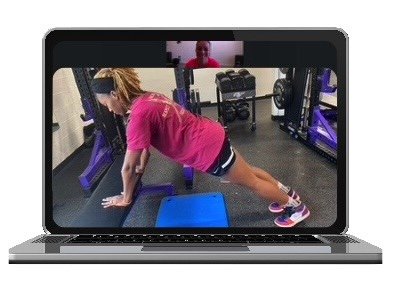ReCORE Guides
FITsplint & Research

FITsplint support belt & research
Why do we call it the FITsplint? The patented FITsplint* allows for a custom fit to you (dual straps that either overlap or lay flat, is fully adjustable, flexible and made of breathable material)
A splint is a type of support that helps pull 2 muscles or joints close together. The FITsplint helps support the stretched out abdominal muscles and tissue during pregnancy and postpartum. While keeping the core and pelvic floor strong is the most important step …a support belt is often helpful when dealing with excess pain, pressure, or large diastasis. The FITsplint can provide support to the back, belly, help reduce bladder pressure and if worn lower, provide compression to the pelvis for those dealing with pelvic girdle pain.
Should I use the FITsplint?
Maternity FITsplint - Wear as needed. For pregnant women who may need additional support for their back, bladder, belly, pelvic girdle pain (worn lower) can benefit from the FITsplint. Women who have a large diastasis during pregnancy may find relief from the FITsplint as well. The Maternity FITsplint can be worn postpartum..the straps will just wrap more around the back.
Post-Natal FITsplint - Recommended to wear postpartum for about 4-6 weeks while reconditioning the core and pelvic floor, especially if dealing with a separation 2 or more finger widths.
*Research has shown that combined use of the FITsplint along with core reconditioning exercises improved trunk flexion strength faster than the exercise only group or those with no intervention. Exercise and the use of a binder may help promote collagen formation at the linea alba -Keshwani 2019
FITsplint BENEFITS
-
Protects from further stress or strain
-
Provides gentle compression, helps transfer load
-
Provides proprioceptive feedback
-
Supports the abdominal muscles, hips, back and pelvis
-
Use both straps to gently lift belly to help reduce bladder pressure during pregnancy
-
Supports weakened abdominal wall and tissue during healing process postpartum
- Wear lower around the hips to help reduce pelvic girdle pain
FITsplint FEATURES
- Elastic binder
- Allows full range of motion
- Does not restrict breathing patterns
- Easy to support weakened abdominal muscles without increasing *pelvic floor pressure
- Non-slip technology
- Straps can splint without overlapping or bunching
*Pelvic floor pressure
Abdominal binders used in study [FITsplints] were unlikely to evoke or exacerbate urogynecological symptoms through causing Intra abdominal pressure. -Keshwani, Mathur, McLean 2019
While rigid binders can cause intra-abdominal pressure, elastic binders do not. -Zhang et al. 2016
Doming, coning or bulging occurs due to a weakened anterior wall either by diastasis recti (lengthening of the linea alba), lengthening of the abdominal muscles due to pregnancy or lack of ability to sustain muscle stiffness (being able to resist internal force). Training to increase core stiffness (resist force) as well as core strength (produce force) will improve the ability to create and handle higher Intra abdominal pressure which is critical to being able to produce more force.
What does the Research say?
Wearing the FITsplint while reconditioning the core and pelvic floor provides the most optimal environment for postpartum recovery than exercise alone.
Physiotherapy interventions such as abdominal binding [such as the FITsplint] with exercise therapy can positively impact body image and trunk flexion strength. While a clinical trial investigating these interventions is feasible, further preliminary investigation is recommended. -Keshwani, Mathur, McLean 2019
Wearing the binder immediately after the vaginal delivery provides greater stability to the woman’s body as it provides support to the stretched ligaments and muscles, as well as supports the spine and improves posture. Subsequently, reducing strain on lower back and pelvic ligaments and joints help in alleviating back and pelvic pain through taking the pressure off these regions. Reducing stress in these areas enhances the body’s ability to return to its pre-pregnancy alignment and shape and helps the woman to return to her normal activities and wardrobe sooner. - Pela, Spoora 2008
Postpartum body garments provide support to abdominal wall, assist in abdominal muscles retraction, improve posture, stabilize loosened ligaments and provide support to the torso while vital organs returned to their pre-pregnancy position. So, many women reported returning to their pre-pregnancy sizes faster while using it. - Mokhtar 2010
SOURCES
FITsplint Utility Patent No. 9,398,973
El-Mekawy H, Eldeeb A, El- Lythy M, and El-Begawy A. Effect of Abdominal Exercises versus Abdominal Supporting Belt on Post-Partum Abdominal Efficiency and Rectus Separation. Int J Med Health Sci. 2013;7(1):75–9.
Keswhani N, Mathur S, McLean L 2019 The impact of exercise therapy and abdominal binding in the management of diastasis recti abdominis in the early postpartum period: a pilot randomized controlled trial, Physiotherapy Theory and Practice, DOI: 10.1080/09593985.2019.1675207
Zhang H, Liu D, Tang H, Sun S, Ai S, Yang W, Jiang D, Zhang L 2016 The effect of different types of abdominal binders on intra-abdominal pressure. Saudi Medical Journal 37: 66-72
M .Pela.; W. Spoora; R. Goossensb, and A.Pool-Goudzwaardabg.: "Biomechanical model study of pelvic belt influence on muscle and ligament forces", J. Biomech.,41(9): 1878-1884, 2008.
A. Mokhtar,: "A Belly Good Wrap", Postpartum Wellness Assoc., 10(3):8-13, 2010.


















